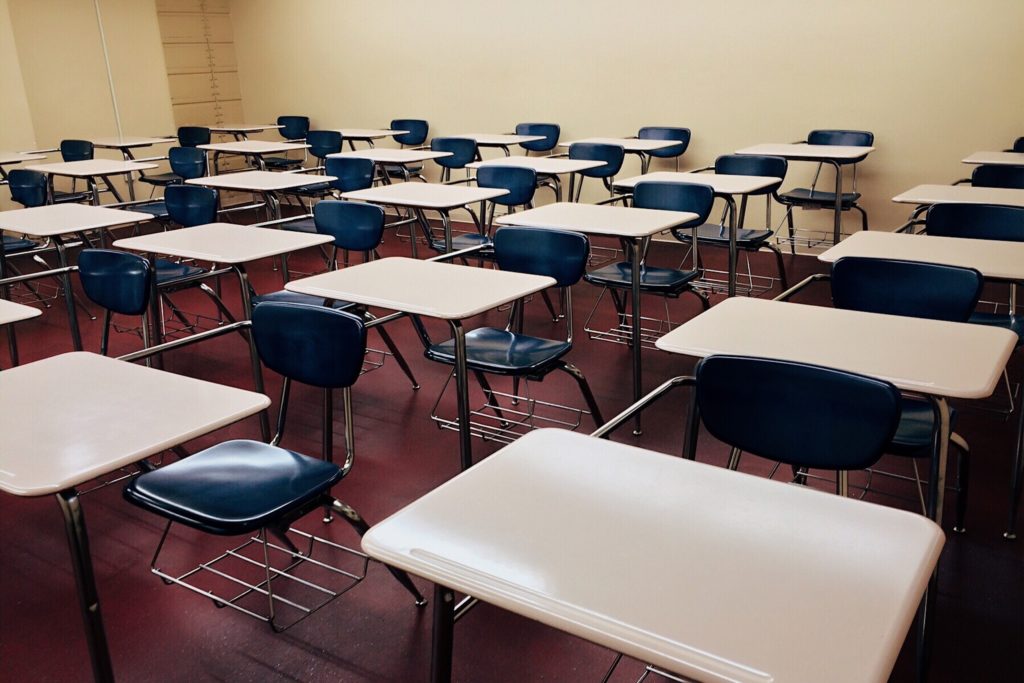
requirements permit, each of the schools plan to be open for the entirety of the spring. |Pexels
Hillsdale County high schools are returning to in-person instruction this January as a result of Michigan Gov. Gretchen Whitmer allowing the return across Michigan on Dec. 18, 2020.
Hillsdale Community Schools, North Adams-Jerome Public Schools, and the public charter school Will Carleton Academy all resumed in-person high school classes on Monday, Jan. 4. Litchfield Community Schools returned from the holidays with one week of virtual classes for K-12 and started in-person classes Monday, Jan. 11.
“We chose to wait one more week to give people a chance after vacation and holiday gatherings to sort out who might be exposed or test positive so we can keep those folks at home,” Litchfield Superintendent Mike Corey said. “The hope is, that once we start back in person we can stay open and in session [through June] according to our calendar.”
As long as local health requirements permit, each of the schools plan to be open for the entirety of the spring — with additional health protocols and the option of online learning.
Superintendent of Hillsdale Community Schools Shawn Vondra said in an email that their in-person learning plan includes social distancing, face coverings, additional PPE protocols, staggered start and stop times, limited interaction time between classes, cohort grouping of students, social distancing during lunch and recess times, and daily sanitizing and disinfecting protocols. The district also increased staffing to reduce class sizes in classrooms and to teach students choosing to learn virtually.
Likewise, Will Carleton Academy Director Colleen Vogt described their routine as “a big-picture mitigation strategy,” but keeping it all in-person.
Among other protocols such as temperature checks and mask-wearing, students remain in their designated classrooms for the whole day and only multi-year instructors — such as the art, french, and physical education teachers — travel from room to room. In order to keep classroom sizes small, the school now uses the gym for another “classroom” area with spaced-out desks. Students alternate between days in the classroom with the teacher and days in the modified gym watching their class synchronously over Zoom.
The schools are also preparing for the possibility of another government-mandated shutdown. Superintendent of North Adams-Jerome Public Schools Wes Johnson said in an email that the administration is taking extra steps to aid student’s mental health and technological needs.
“We know the mental health aspect of the last 10 months has been hard on all of us, so we are taking steps to get mental health professionals aware of our needs,” Johnson said. “We aren’t sure if the government has plans to mandate virtual only in the near future, so we have invested a great deal of resources into technology capabilities for every student who needs it.”
However, each of the schools are making every effort to stay open, as the quality of in-person learning surpasses online school.
“If given the choice to stay online or be in person, we choose in person,” Vogt said. “We are confident that we’re keeping COVID-19 off due to everyone making good choices.”
Johnson said North Adams-Jerome Public Schools prefer the in-person model and believe it is “much better” for all parties.
“I don’t think there is an adequate substitute for high quality in-person instruction,” Johnson said. “I believe our teachers and paras are some of the top professionals in the area and this pandemic has shown how valuable teachers are.”
Vondra stated that in-person instruction is preferable for students developing critical thinking skills.
“The classroom environment in Hillsdale Community Schools is designed to help students develop important critical thinking skills while learning content and factual knowledge,” Vondra said. “When students and teachers are at school, the classroom discussions, hands-on experiments, guided-practice lessons and timely feedback help students develop these skills more effectively.”
One of the main struggles with virtual learning that many noted is the lack of instant feedback.
For example, Vondra said there are often times “when students are unsure or even not aware of their errors and misunderstandings.” As a result, not all students ask the important questions of their teacher. “When students are together in a classroom,” Vondra said, “everyone can benefit from any student asking questions.”
Additionally, the school administrators addressed the relational importance of having school in-person.
“Relationships and personal contact is the biggest thing impacted in virtual school,” Corey said. “All our staff are really excited about being back in the building.”
Vogt noted the importance of personal connection such as eye contact, which is lost in virtual learning.
“One of the things that draws people here is the family atmosphere,” Vogt said. “Even six feet apart, you’re able to connect and see [the students’] eyes. Over a computer screen, you can’t read body language.”
Johnson said he believes students “will always benefit more” from being in the room with the teacher.
“We weren’t created to stare at computer screens all day,” Johnson said.

